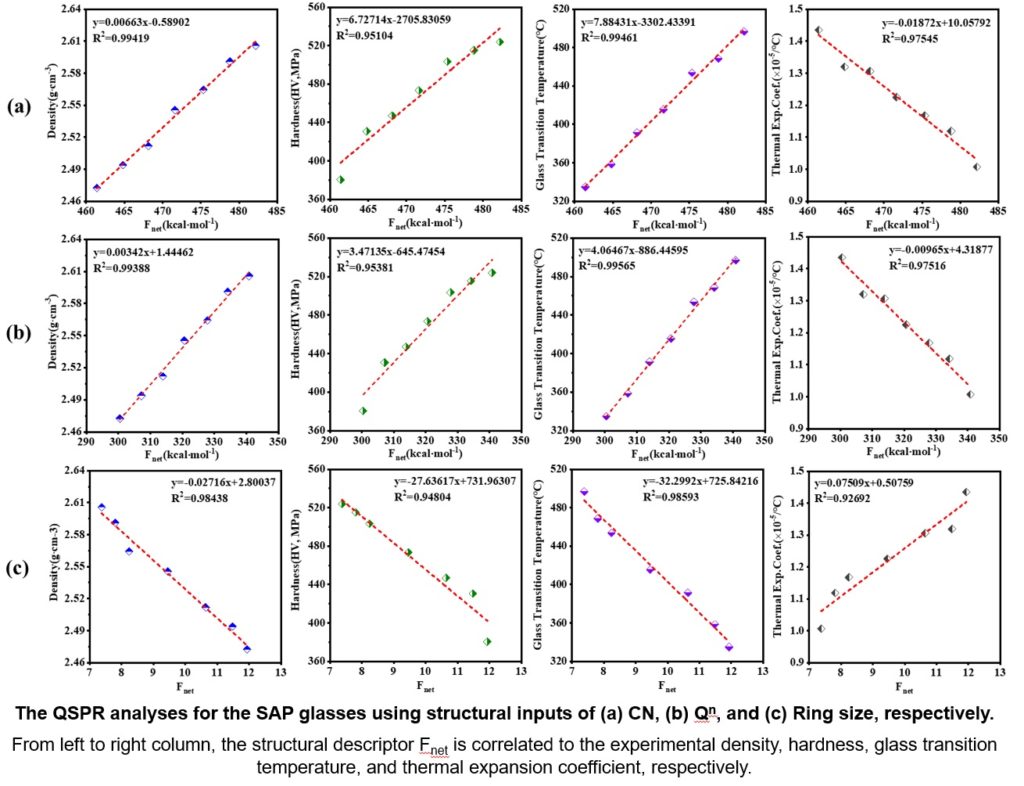Phosphate glasses have various applications in fields including biomedical materials, optical components, and sealing materials. In addition, its ability, containing more rare-earth elements than the borosilicate glass, makes it become a potential candidate of the high-level nuclear waste virtrification for those with high rare-earth content. Therefore, it is important to understand the composition-structure-property relationship of the phosphate glasses. In this paper, an architype of multi-component phosphate glasses, sodium aluminophosphate (SAP) glasses, has been investigated by using molecular dynamics (MD) simulations. In addition, experiments of Raman and synchrotron X-ray total scattering have been performed to characterize the glass structures and validate the simulation results. Moreover, the Quantitative Structure-Property Relationship (QSPR) analysis was performed to correlate the simulated glass structures with the experimentally measured properties, such as the density, Tg, CTE, and hardness. Results show that additional aluminum content will lead to a gradual replacement of the P-O-P linkages by the P-O-Al linkages, and it will also modify the long chains of the SAP glass into three-dimensional ring structures. The QSPR models show linear relationships between the structural descriptors from simulations and the measured properties; in addition, its ability to predict certain glass properties based on the simulated glass structures has also been validated.
Abstract
Composition-structure-property relationship of phosphate glasses: a combination of experiments, simulations, and QSPR analysis
Composition-structure-property relationship of phosphate glasses: a combination of experiments, simulations, and QSPR analysis
Lu Deng* 1, Minzhi Ruan 2, Jingping Yan 1, Yajiao Zhang 1, Feimei Wang 1, Zhongdi Li 2
1 Shanghai Institute of Optics and Fine Mechanics (CAS), Shanghai, China
2 China Nuclear Power Engineering Co. Ltd., Beijing, China
2 China Nuclear Power Engineering Co. Ltd., Beijing, China

- Type: Poster
- Related categories: Simulation/modeling
